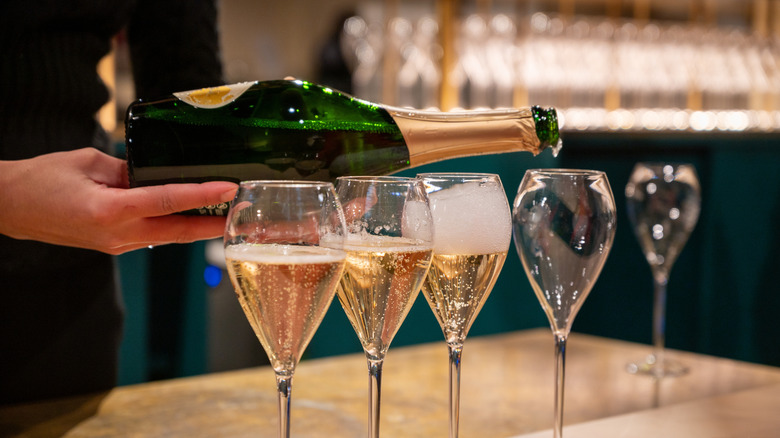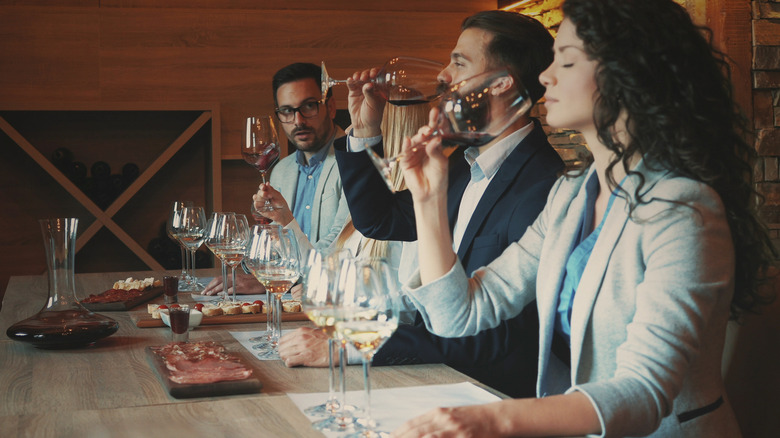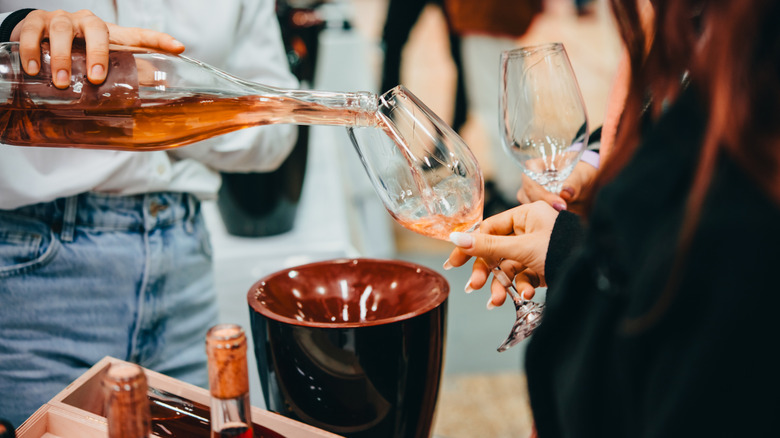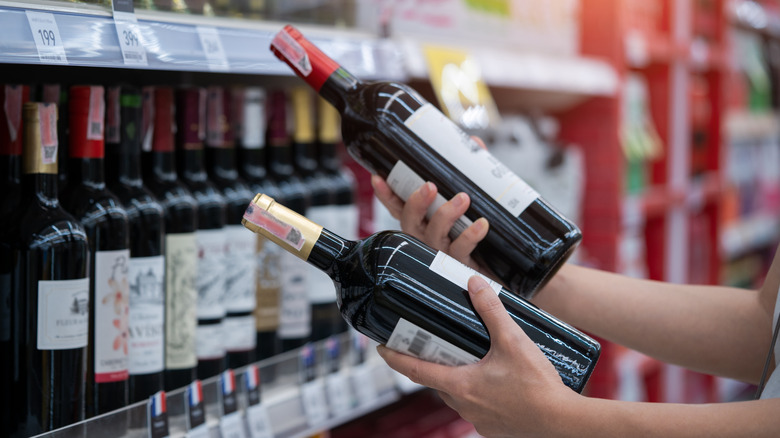How Do You Prepare For A Wine Tasting?
To those unfamiliar, the world of wine can feel somewhat impenetrable. It is, admittedly, complex, but knowing even a little about what you like can help you avoid making a mistake when you buy your next bottle. One of the best ways to learn more about wine is by going to a tasting — but there are a few different types you might come across, and some things you should know before you go.
To find out a little more about what to expect, and how to prepare, Food Republic turned to an expert on these things, Doreen Winkler of Orange Glou. She was named one of "America's Top Sommeliers" by Forbes and is the founder of the annual Orange Glou Wine Fair. In other words, she knows her stuff.
"The first thing to understand about wine tastings is that you're there to taste, not to drink. You'll be served tasting portions, so don't expect this to be a party," she told us. So you're not there to get drunk — trust us; you'll enjoy the wine more if you don't. Another important thing to know is what kind of tasting you're going to –- this can help you prepare. According to Winkler, the "[t]hree common tasting formats are guided sit-down tastings, walk-around tasting events, and informal in-store tastings."
One important way to prepare starts before you even head out the door of your home. Winkler pointed out: "[D]on't wear perfume or cologne as the scent will interfere with the tasting for you and everyone around you!"
Sit-down tastings are the most formal
"Sit-down tastings are the most formal and involved, with an expert leading the tasting," Doreen Winkler noted. The benefit of the sit-down tasting is in its structure, guiding you through each wine in a "specific tasting progression." According to Winkler, "[w]hen you arrive, expect to see glasses on a white mat with the names of the wines you'll be tasting at your seat."
Don't be intimidated by this, though. "The wines will most likely already be poured, but some are poured just before tasting depending on the temperature the wine needs to be served at," she explained.
A formal tasting can be wonderfully convivial, too, Winkler told us: "Everyone will talk about the aromas and flavors of the wines, as well as background on the featured winery, wine region, grapes, etc." If you're unsure of anything, don't feel intimidated, either — your sommelier is there to answer your questions. These more formal tastings are great for understanding how the flavors develop from one wine to the next. "There will be a specific tasting progression designed by the presenter, and it's up to you to leave a bit of wine in each glass to go back and taste a wine again to compare.
But most importantly, you don't need to drink everything. "On the table, there will likely be vessels for you to spit the wines into," Winkler elucidated. In fact, "you can just taste them and spit." Remember, the goal is not to get drunk but to explore the world of wine.
Walk-around tastings give you great variety
The walk-around tasting is a step down in formality from the aforementioned sit-down tasting. These events are great if you're a little more knowledgeable and therefore able to navigate different wines on your own — as they're typically less structured and less prescriptive than a sit-down tasting. But they're also good for beginners as they offer a low pressure environment to ask questions or just taste wine without feeling judged. They offer a chance to mingle with other wine aficionados and, uniquely, with the winemakers.
"Walk-around tastings are less formal, usually larger events that have food available too. You can go at your own pace, choose which booth or table to go to, and taste wines often poured by the winemakers themselves," Winkler informed us. This is great because it means you're able to spend more time on the wines you like, and less on the ones you might not like as much.
The relaxed environment means that you'll have more of a chance to pace yourself and really enjoy the wine. The food is a great addition too — you get to explore and find out how different foods interact with various wines: the way a dry white wine pairs with sushi will be totally different to how the same wine pairs with cooked salmon, for example. Walk-around tastings also allow you to sample a broader range — whether that's variety in region, producer, or even grape! They also tend to be a much more affordable, accessible way to get into some great wines, for sommeliers of all levels.
In-store tastings are the most accessible option for beginners
If you're looking for an even more casual way to not just taste wine, but take it home, too, in-store tasting might be what you're looking for. "In-store tastings at your local wine store are even less formal — and usually free," Doreen Winkler said. Being so affordable means that this is easily the most accessible type of tasting and is a great way to get to know a little more about wine without having to make a big commitment. A tasting at your local store is right there on your doorstep — you don't have to go far out of your way to find great wine.
Beginners may find them more accessible because they're both casual in tone and (most likely) smaller in scale — you can start off by trying just a couple of wines and discover what you like about each of them, rather than being presented with a whole different range of wines all at once. "You can come at whatever time you want while the tasting is taking place," Winkler explained: "[I]t's a great opportunity to discover new wines, ask questions to better understand the wines you like, and taste wines before you buy."
Doing a tasting at your local wine shop is also a great way to get to know the people who'll be selling you your wine — and, perhaps more importantly, it's a great way for them to get to know you. Once they understand your preferences, they'll be able to recommend a wine you're more likely to enjoy.




